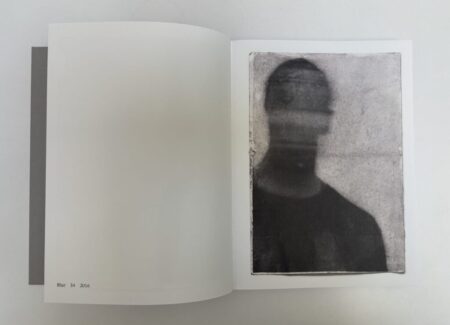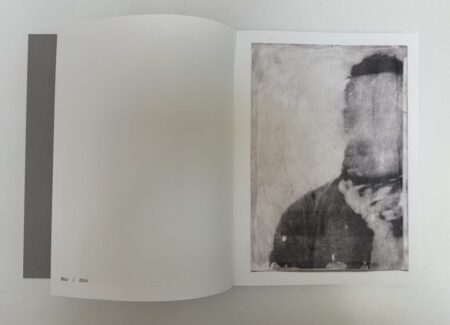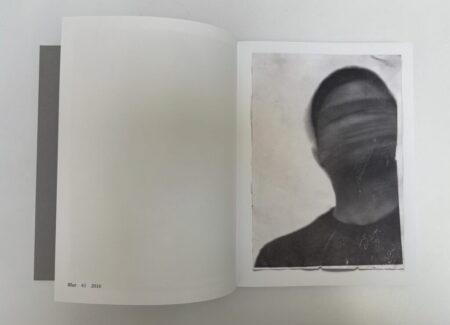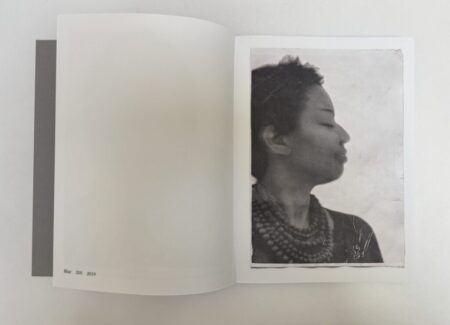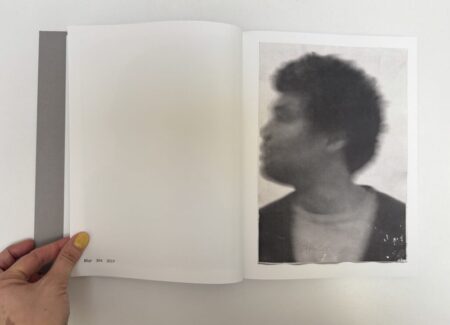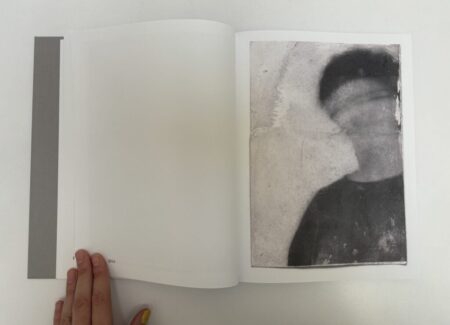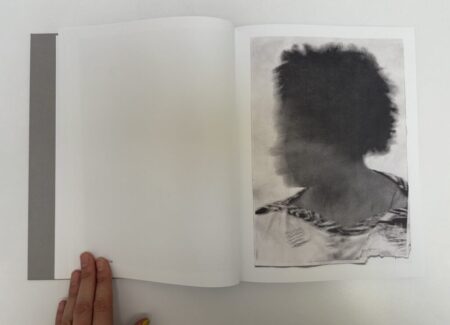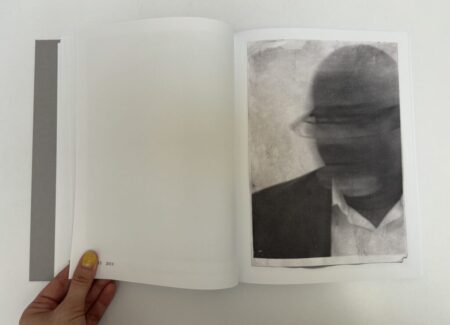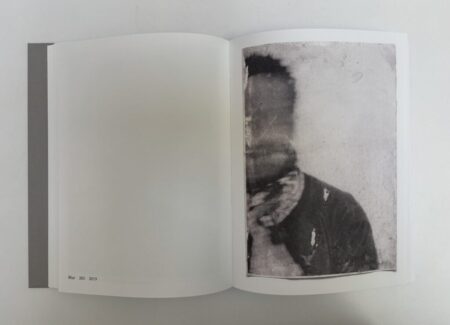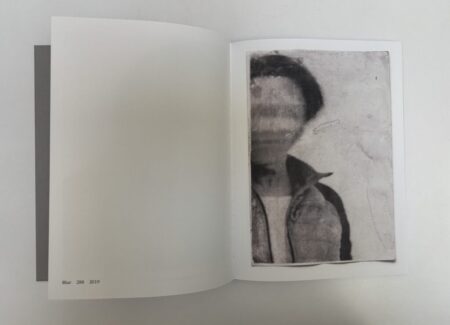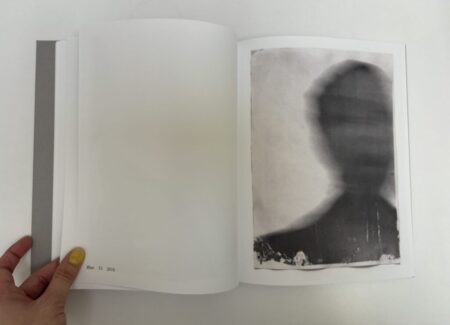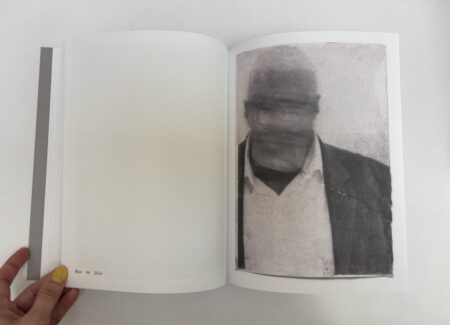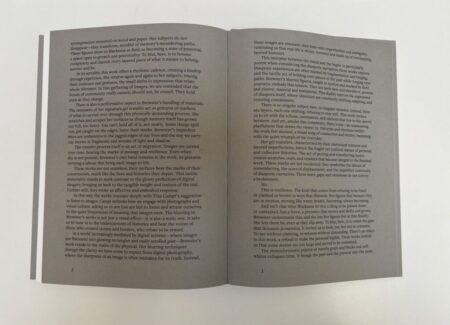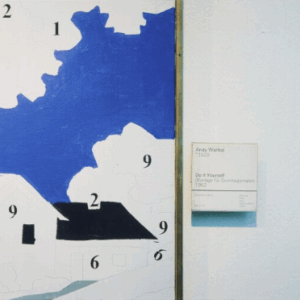JTF (just the facts): Published in 2025 by Free Pony Press (here). Hardcover (21 × 28 cm), 200 pages, with 71 black-and-white photographs. Includes an essay by Pamela Edmonds. Design by Our Polite Society. In an edition of 500 copies. (Cover and spread shots below.)
Comments/Context: The Canadian visual artist Sandra Brewster works across a range of artistic mediums, including drawing, video, installation, and photo-based works. Born to Guyanese parents, she engages with themes of memory, identity, and representation, with a particular focus on Caribbean migration and the evolving sense of self within the diaspora. Her practice is deeply influenced by vernacular photographs, especially early images of Caribbean Canadians.
In her series Blur, which she began in 2016, Brewster delves into the layered nature of identity. The images depict figures in motion—obscured, layered, and unresolved. These are not merely aesthetic choices but conceptual gestures. Brewster instructed her subjects to move while she captured their portraits using a slow shutter speed. She then transferred the images onto new surfaces using a gel medium, preserving subtle transformations – creases, tears, and the blank spaces where the ink failed to take hold. The image-transfer technique becomes a metaphor for physical movement and transformation. Brewster explains, “the intention of the blur is also to represent individuals as layered and complex.” The series has been exhibited in various venues, including the Art Gallery of Ontario, and the project was recently published in a photobook, Brewster’s first.
As a photobook, Blur is substantial in weight, with a light gray cover where the artist’s name and the title are faintly embossed – a quiet nod to the themes of impermanence and memory. The book features an open spine bound in black cloth, and the title reappears on the front page in black font against a white background. Inside, all of the photographs are placed on the right-hand page in a consistent size, while the left-hand page bears a simple caption noting the blur number and year. The design is restrained, allowing the images to breathe. Generous white space and deliberate pacing encourage slow, contemplative viewing. An essay by Pamela Edmonds appears at the very end, printed on grey paper that matches the cover. It considers how the work challenges fixed representations and evokes histories of migration. Throughout the book, the tactile quality of the original works is echoed in the printing: the images retain a sense of texture, as if the paper itself remembers the pressure of the artist’s hand.
One of the first things a viewer notices when flipping through the book is the repetition. All of the photographs – rendered in soft blacks and grays – follow the same format: a person swaying their head from side to side, their facial expressions smeared, blurred, and mostly unreadable. Brewster’s use of blur as a photographic strategy suggests an intentional obscuring of legibility and visibility. There is no singular subject; instead, patterns and rhythms emerge, and this repetition creates a kind of kinship between her sitters. Her practice becomes a form of a visual storytelling that honors the complexity of diaspora experience, while challenging the dominant modes of representing that identity.
The images also bear various markings – distressed texture, tears, scratches, and other imperfections. For Brewster, they symbolize displacement, layered histories, and movement. As Edmonds notes in her essay, the sharpness of a digital photograph can be mistaken for its truth, whereas Brewster’s images embrace imperfection and ambiguity, “reminding us that real life is messy, textured and made up of overlapping, layered histories.” Brewster invites viewers to consider how memory is not only preserved, but how it is also continually reshaped by movement, time, and touch.
Brewster’s series relates to many larger issues connected to identity and migration, and can be placed in dialogue with a number of recent photobooks. The work of Stacy Arezou Mehrfar explores similar questions of belonging in her photobook The Moon Belongs to Everyone (reviewed here). And in her book My Olive Tree, Memouna (reviewed here), Naïma El Kadi probes her own split personal history between Morocco and Belgium, via ephemeral views of the land, open-ended Polaroids, and reflective poems. Brewster’s photobook is an excellent contribution to this ongoing exploration.
As a photobook, Blur is both conceptually rich and beautifully executed. It offers an in-depth exploration of Brewster’s techniques and their engagement with themes of opacity, resilience, and the layered intricacies of Black identity. Her work resists the flattening of identity into singular narratives, instead embracing multiplicity and flux. Blur is also a compelling example of how a photobook can serve as both an extension and a transformation of an artist’s practice. It reminds us of a photobook’s ability to preserve and convey memory – delicate, multilayered, and constantly evolving.
Collector’s POV: Sandra Brewster is represented by Olga Kolper Gallery in Toronto (here). Her work has not yet found its way to the secondary markets, so gallery retail likely remains the best option for those collectors interested in following up.


